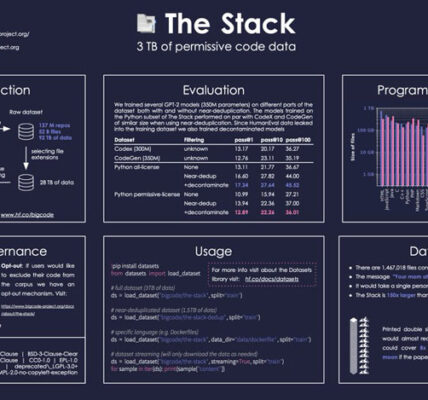Introduction:
The AdamW optimizer is a variant of the popular Adam optimizer that introduces weight decay directly into the optimization step, aiming to improve generalization performance. In this article, we’ll delve into the workings of the AdamW optimizer in PyTorch, examining its key components and providing code snippets for implementation.
Understanding the AdamW Optimizer:
The AdamW optimizer is based on the Adam algorithm, which combines the advantages of both adaptive learning rates and momentum. However, unlike the original Adam optimizer, AdamW incorporates weight decay directly into the update step, leading to better regularization and improved generalization performance.
Code Implementation:
Let’s see how to implement the AdamW optimizer in PyTorch:
import torch
import torch.nn as nn
import torch.optim as optim
# Define your neural network model
class MyModel(nn.Module):
def __init__(self):
super(MyModel, self).__init__()
# Define your layers here
def forward(self, x):
# Define the forward pass of your model
return x
# Instantiate your model
model = MyModel()
# Define your loss function
criterion = nn.CrossEntropyLoss()
# Define your optimizer (AdamW)
optimizer = optim.AdamW(model.parameters(), lr=0.001, weight_decay=0.01)In this code snippet, we define a simple neural network model, a loss function (in this case, cross-entropy loss), and instantiate the AdamW optimizer with a learning rate of 0.001 and weight decay of 0.01.
Training Loop:
Now, let’s see how to use the AdamW optimizer in the training loop:
# Define your dataset and data loaders
# Training loop
for epoch in range(num_epochs):
model.train()
running_loss = 0.0
for inputs, labels in train_loader:
# Zero the parameter gradients
optimizer.zero_grad()
# Forward pass
outputs = model(inputs)
loss = criterion(outputs, labels)
# Backward pass and optimize
loss.backward()
optimizer.step()
# Update running loss
running_loss += loss.item() * inputs.size(0)
# Calculate average loss for the epoch
epoch_loss = running_loss / len(train_loader.dataset)
# Print epoch loss
print(f'Epoch [{epoch+1}/{num_epochs}], Loss: {epoch_loss:.4f}')In this training loop, we iterate through the dataset, compute the forward pass, loss, perform backward pass, and update the model parameters using the AdamW optimizer.
Conclusion:
The AdamW optimizer is a powerful tool for training neural networks in PyTorch, offering improved regularization and generalization performance. By incorporating weight decay directly into the optimization step, AdamW helps prevent overfitting and enhances model robustness. Utilize the provided code snippets to implement the AdamW optimizer in your PyTorch projects and take advantage of its benefits in training deep learning models.




